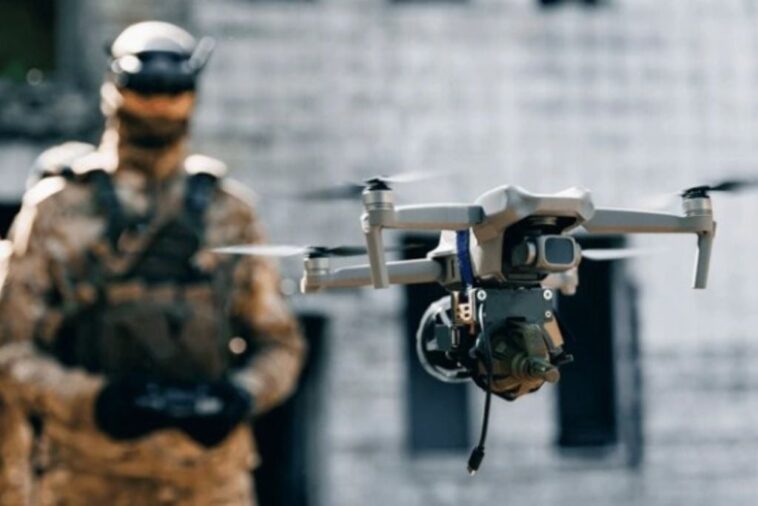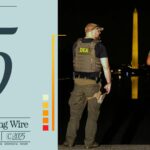As an officer in the Army, my first job as a lieutenant was as a training officer at a Basic Combat Training Brigade at Ft Leonard Wood, MO, 1978-80. Having gone to the Drill Sargent Academy for ITC (Instructor Training Course) and having gone through (13) Basic Training cycles for 8 weeks at a time, often with no breaks (graduate a group on Friday, start a new one on Monday next week) was a real eye opener.
TRADOC (Training and Doctrine Command) is responsible for the first encounter of civilians to become soldiers. It is also responsible for all training through CSMA (Command Sergeant Major Academy) and AWC (Army War College).
My last active duty assignment was as the Director of Intelligence Training Dept of Special Operations at SOA (School of the Americas), where I taught courses to Hispanic American officers from 17 nations at the diverse Intelligence Basic and Advanced courses and portions of the Spanish version of CGSC (Command General Staff College).
As I transitioned into the Reserves, I also taught as an IMA (Individual Mobilization augmentee) as an instructor in the Armor Basic and Advanced Course at Ft Knox, KY.
TRADOC is at a point of complete revision of military doctrine with the advent of drones. It must review everything in its books to absorb the changes of the new air-land battle.
The number of innovations and adaptations made to commercial drones and the creation of other new categories of drones and loitering munitions within the last three years in both the Ukraine War and the Middle East are making armies readjust daily how they fight, defend, and perform special operations.
Drone warfare has had a classical evolution. It began as an intel platform for reconnaissance, then as a multi-use platform to disrupt communications, assist in targeting, and act as an aerial command post with multiple cameras.
In 1990-91, we had the Pioneer, a Division asset, although the data was collected, exploited at the national level, and its final product was disseminated back to the units on the frontline. From there, we have had drones in strategic tactical operations over Iraq, Afghanistan, pursuing Osama Bin Laden, and many terrorists worldwide.
Drones have undergone significant upgrades now. We have submersible drones, land-based drones, and the ever-popular flying drones. Their roles continue to evolve with each need. We have expendable drones, also called loitering munitions or hunter drones, which will pursue you to your death.
During the 1990s, we started looking into UAVs (Unmanned Aerial Vehicles). Germany started by creating an autonomous artillery unit, the RCH 155, and South Korea developed the K9a3 and many more variants.
Tanks were also on the drawing board, but as the years have passed, the trend to integrate robotics has led to smaller vehicles, or land-based drones. Some serve as mine layers, others breach minefields, and still others assist in the recovery of troops. So that area of land-based drones is still open to the imagination or needs.
Water submersible drones (Unmanned Underwater Vehicles, UUVs), aka drones, also proved their effectiveness during the Ukrainian War. Thus, the battlefield has been a testing ground for research and development for these innovative drones.
Today’s drones in Ukraine account for more than 60% of all combat deaths. The latest drone developed by the Russians, a fiber optic line drone that is not susceptible to jamming and has a clearer image, has made its debut on the battlefield. Flying lower and being able to zoom in on higher-quality video while pursuing you to your bunker or hideout offers no redemption.
But having said all this, the focus should be back to the doctrine of battle. And what will need to be done to adjust for this new threat. Static defenses, trench warfare, reinforced positions become death beds, tombs, sacrificial stones for infantrymen.
In the past, the doctrinal conception of the battlefield, the Infantry, was called the Queen of the battlefield, given that he who holds terrain can call himself/herself the one who controls it. The artillery attributes itself by being the King of the battle since its rain of lead can temporarily control some terrain by fire. That is by firing at a location to prevent others from having it.
But now on the frontlines, you have drones in surveillance mode, others as hunters, and still others as loitering munitions. This combination will detect as you move, assign a kamikaze drone for your execution, and complete the job with a gliding aerial bomb to bury you in place (Die in Place, DIP).
The longer you stay in your foxhole, you are no longer capable to do patrols, perimeter walks, reinforce your area. The fear of the buzzing sound over your head is constant, you can’t sleep, must stay alert if you don’t have toilets or areas to do your basic necessities, coming out can cost your life and that of your squad.
So, how will static defenses, frontlines, and perimeters be defended in the future?
Going on the offense, again, you are prey to the kamikaze drones, loitering munitions that can glide and be commanded by GPS towards you, your vehicle or column.?
What battle formations will be taught for tanks and APCs (Armored Personnel Carriers) in an open valley? On a road going through a battlefield?
The US Army is exploring the use of tethered drones for aerial surveillance, situational awareness, rescue operations, reconnaissance missions, perimeter security, and as many other possible missions as you can think of. But will that prevent a swarm of drones (kamikaze drones) deployed by a mothership drone in open combat? What if the Fujian Amphibious Assault carrier also becomes a drone carrier? Can it launch hundreds of drones simultaneously?
Integrating drones into smaller tactical formations (platoon level), a 30-40-man unit, four squads, is on the planned new concept of tactics. Creating a dedicated drone squad (new MOS) Military Occupational Specialty is another required step.
This squad would be the first umbrella of defense for the platoon, using Hunter-Killer drones and EW equipment to intercept enemy drone signals and drop them out of the skies.
Counter-drone doctrine will be a new subject taught at Basic Training and all other levels of training. Having inexpensive and easily replaceable killer drones at the platoon level would be a standard issue.
The defensive portion of this doctrine must address:
- Drone Defense
- Drone detection
- Disruption of Enemy drones
- Operations of killer drones
Another important consideration involves ethical limitations in combat with drones. This would be a clear guideline to address civilians in combat zones, much aligned with the Geneva Convention, where we define an enemy combatant versus a civilian.
The same way the air force has now more drone pilots and actual aircraft pilots, the Army would potentially have to create a specialized Drone Corps. This would breakdown the assets from Division down to platoon levels integrating both operation tactical attack drones, defensive killer drones and surveillance for the entire unit.
At the TRADOC level, three key principles should be considered:
- Comprehensive Training & testing in order to achieve maximum integration and utilization
- Interoperability, which implies training our allies to ensure equal operational training in case we are in combat with a joint operation
- Consider the broad context of information as a whole and how that influences activities in operations
There is no question that the Army needs to adapt to drone warfare; the current internal struggles are those to either create a new corps or integrate into existing units.
Ukraine has led the way, and the Russians have also followed them in incorporating this into their existing units.
Congress did pass resolution 8070 (June 2024) that can establish this Drone Corps, but it has run into a logjam since Army Chief of Staff General Randy George believes we should follow suit, as the Ukrainians have integrated existing units.
This decision to go either way would represent the most important decision the Army will make in the future.
Drone Warfare has had geometric evolution patterns since the War in Ukraine started in 2022. According to an article in Army Aviation Magazine (December 2023 edition), both General Jim Rainey and Dr. James Greer state that in less than two years, drone doctrine and development went through 4 generations of tactical re-adjustments.
This same period, under normal circumstances, would be what you would consider the normal evolution of one generation to another.
Following the Ukrainian model would make more sense, since the proliferation of drones with specific functions is constantly changing.
Doctrine was based in the past on after-action reports, in depth studies, white papers, lessons learned, studying other wars. Given this new battlefield fluid changes and accelerated innovation which is four-fold, in technology adopting the good old Soviet R/D concept of fielding it and let the troops figure out the bugs and we will change it seems more adequate, as well as writing doctrine on the go may be the road to follow.
The US armed forces are plagued with tank prototypes that were never fielded. The XM1202 being one of them, the US RD has always spent millions of dollars in developing weapons systems, and after cost overruns and many other emerging issues. That also applies to other branches.
With the advent of AI and the evolving battlefield, there is no time to waste in implementing new technology and integrating it into doctrinal training. A faster, more vicious battle that takes advantage of your lack of response.
Drones that surveil the battlefield, working in tandem with kamikaze drones and loitering munitions following you to your den, foxhole, or bunker. Drones are small enough to enter the structure and detonate on demand or by impact.
Because of the abruptness and shortage of personnel, the Ukrainian army has drone operators who are not drone specialists. Depending on the type of drone used, its purpose, and the level of integration with other platforms in a combined arms battlefield (Army-Air Force-Navy-Marines)
Then and only then would you have teams with the specialty drones attached, OPCON (operational control). That would be a reason to form Drone units, that can be detailed to performed in selected scenarios. Only then would you establish a drone order of battle and MTOE (Modified Table od Equipment) let’s say within a division.
This would create an umbrella of defenses from platoon to division levels, where a centralized HQ at either brigade, regiment, or division can move its assets to support its operations. But the real need is for infantrymen to feel protected as they move, so that they can defend themselves with an anti-drone device or a killer drone.
So, eventually, some sort of command would be necessary since drone operation and integration can get very complicated. Creating these teams and units is a must, and they will have to be trained by those knowledgeable in different disciplines (Armor and infantry operations, artillery, and reconnaissance). Only then can an operator in these units effectively integrate and support a unit in combat.
Doctrine must evolve as technology upends innovation based on demand and expeditious fielding of this new family of weapons systems.
Drone do not substitute basic tactics and conventional or asymmetric warfare, but are an important force multiplier, giving advantages to those who know how to integrate them in support of their operations.
The books are opened, and the changes are happening even as we write this article.
The views expressed in this article are those of the author and do not necessarily represent the official position of Gateway Hispanic.
About The Author
Octavio Pérez
El Teniente Coronel Octavio Pérez es un oficial de inteligencia del Ejército de los Estados Unidos con amplia experiencia, acumulando más de dos décadas de servicio activo y asignaciones adicionales en la reserva. Se especializó en inteligencia y en Guerra Nuclear, Biológica y Química, comandando operaciones en Fort Leonard Wood y prestando servicio en la República de Corea. En la Agencia de Inteligencia de Defensa (DIA), se centró en el análisis militar de Corea del Norte y respondió a crisis relacionadas con los incidentes del Achille Lauro y del vuelo TWA 847. Pérez se ofreció como voluntario con la 1.ª División de Caballería durante la operación Desert Shield/Storm y posteriormente se desempeñó como Jefe de Instructores de Inteligencia en la Escuela de las Américas del Ejército de EE. UU., formando a oficiales hispanoamericanos en conflictos de baja intensidad. Su carrera en la reserva culminó en el Comando Sur de EE. UU. como oficial de inteligencia estratégica (J2 Ops).
Lt. Colonel Octavio Perez is a highly experienced U.S. Army intelligence officer with more than two decades of active-duty service and additional reserve assignments. He specialized in intelligence and Nuclear, Biological, and Chemical Warfare, commanding operations at Fort Leonard Wood and serving in the Republic of Korea. At the Defense Intelligence Agency, he focused on North Korean military analysis and responded to crises involving the Achille Lauro and TWA 847 incidents. Perez volunteered with the 1st Cavalry Division during Desert Shield/Storm and later served as Chief Intelligence Instructor at the U.S. Army School of the Americas, training Hispanic American officers in low-intensity conflict. His reserve career culminated at U.S. Southern Command as a strategic intelligence officer (J2 Ops).
Post Views: 16
👁️ 16 vistas




